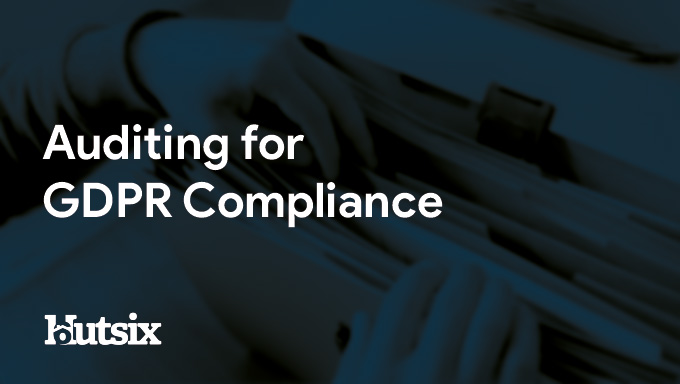What is Regulatory Compliance? Information & Cyber Security Compliance
Defining Regulatory Compliance
Regulatory compliance refers to the process of adhering to laws, regulations, standards, and guidelines set by government agencies or industry bodies in a particular industry. The purpose of regulatory compliance is to ensure that organisations and individuals operate in a manner that protects the public interest, safety, and welfare of a variety of stakeholders.
There are numerous regulations that organisations must comply with, depending on their industry and region. For example, in the US, financial institutions must comply with the regulations set by the Securities and Exchange Commission (SEC) and the Federal Reserve, while healthcare organisations must comply with regulations set by the Department of Health and Human Services (HHS) and the Food and Drug Administration (FDA).
To ensure compliance, organisations typically implement internal policies, procedures, and systems that align with regulatory requirements. They also conduct regular audits and assessments to identify any potential non-compliance issues and address them promptly. In addition, organisations may appoint a compliance officer or team to oversee the compliance program and provide training and education to employees on relevant regulations.
While we'll take a closer look at non-compliance later in this article, it is important to highlight here that failure to comply with regulations can result in severe consequences for organisations, including fines, legal action, and reputational damage. In some cases, non-compliance can even result in criminal charges for individuals within the organisation.
Regulatory compliance is a critical aspect of business operations, as it helps to maintain public trust, protect consumer interests, and prevent harm.
Why is Security Compliance Important in the EU & UK?
Information and cyber security compliance is a crucial matter in the UK and EU for a number of reasons.
Firstly, both the UK & EU are home to a large number of businesses and organisations that handle sensitive information, such as personal data and financial information. These organisations are required to protect this information from unauthorized access, use, and disclosure, and cyber security compliance helps to ensure that they meet these requirements.
The region has a number of laws and regulations related to cyber security, including the Data Protection Act (DPA) 2018 and the UK GDPR in the UK, and the General Data Protection Regulation (GDPR) across the rest of Europe. These regulations set strict standards for the protection of personal data.
Additionally, cyber and information security threats are becoming increasingly sophisticated and frequent, making it essential for organisations to take appropriate measures to protect their systems and data. Security compliance helps to ensure that organisations implement appropriate security controls and have processes in place to respond to incidents and prevent data breaches.
Furthermore, the UK and broader European Union are home to global industry leaders in many fields, including finance, technology, and defence, making organisations prime targets for cyber criminals. Ensuring cyber security compliance helps to mitigate the risks of cyber-attacks as well as protecting critical infrastructure.
Finally, cyber security compliance is also important for organisations' reputations. In 2023, it's no secret that data breaches can cause significant damage to an organisation's reputation and bottom line. By demonstrating compliance with relevant regulations and that matters of security are taken seriously, organisations also help to protect their reputation and maintain the trust of their customers and partners.
Regulatory Compliance in the US
In the United States, various regulations have been established to address the issue of cyber security and to protect sensitive information, including the Health Insurance Portability and Accountability Act (HIPAA), and the Payment Card Industry Data Security Standard (PCI DSS).
Adherence to these regulations is critical for organisations operating in the United States, and as with other regions, failure to comply can result in significant financial penalties, legal liabilities, and reputational damage.
For example, under PCI DSS, organisations that process, store, or transmit credit card information must adhere to strict security standards to minimize the risk of data breaches. Similarly, under HIPAA, organisations can face significant fines for failure to safeguard the privacy and security of protected health information (PHI).
In a 2023 case, a Phoenix, Arizona based health system company was found to have failed to conduct an "accurate and thorough analysis of potential risks and vulnerabilities to the confidentiality, integrity and availability" of health data. Leading to the breach of the PHI of around 2.8 million individuals, the organisation was met with a $1,250,000 HIPAA security violation fine.
Cost of Non-Compliance
Financial Penalties:
Government agencies and industry bodies can impose significant fines on organisations that violate regulations. These fines can be substantial and can have a significant impact on an organisation's financial performance. For example, failure to comply with GDPR can result in fines of up to 20 million euros, or 4% of an organisation's total global turnover of the preceding fiscal year, whichever is higher.
Legal Action:
Non-compliance with regulations can also lead to legal action, including lawsuits and criminal charges. In some cases, individuals within the organisation may be held personally responsible for violations of regulations, which can result in criminal charges and financial penalties.
Reputational Damage:
Non-compliance can also have a significant impact on an organisation's reputation, as it demonstrates a lack of commitment to following rules and regulations. This can lead to a loss of trust among customers, partners, and other stakeholders, which can have a long-lasting impact on an organisation's ability to attract and retain customers, as well as its overall financial performance.
Impact on Operations:
Regulatory non-compliance can also disrupt an organisation's operations, as it may result in restrictions being placed on the organisation's activities, or even downtime as a result of dealing with a cyber-attack. This can limit an organisation's ability to conduct business and achieve its goals and can also impact its ability to compete in the market.
Loss of Competitive Advantage:
Organisations that adhere to regulations are often at an advantage over those that are not. By demonstrating a commitment to following rules and regulations, organisations can build a reputation for trustworthiness and reliability, which can help to gain a competitive edge.
Regardless of region, regulatory non-compliance can have serious and far-reaching consequences for organisations. From financial penalties, legal action, reputational damage, to a loss of competitive advantage, in order to avoid these consequences, organisations must take compliance seriously and implement measures to ensure they are compliant with the relevant regulations at all times.
Regulatory Compliance Case Study
In a recent case, the UK government's Cabinet Office was found to have failed to put "appropriate technical and organisational measures in place to prevent the unauthorised disclosure" of personal information when data related to over 1,000 people was erroneously published via GOV.UK.
Containing the private information of those announced in the New Year Honours list (a formal recognition of achievements in public life, or service to the UK), the document included not only the names of, but also the unredacted home addresses of individuals including Sir Elton John, politician Sir Ian Duncan Smith, and television presenter and chef Ainsley Harriot MBE.
Illustrating the importance of regulatory compliance, the government department was eventually hit with a £500,000 monetary penalty notice courtesy of the Information Commissioner's Office (ICO).
Steps for Ensuring Regulatory Information Security Compliance
1. Assessment:
The first step is to assess the current state of your organisation's cyber security posture and identify any areas that need improvement to meet regulatory requirements. This may include conducting a risk assessment, reviewing existing policies and procedures, and evaluating current security controls.
2. Policy Development:
Once the assessment is complete, the next step is to develop a comprehensive set of security policies and procedures that align with the organisation's risk profile and regulatory requirements. These policies should cover areas such as access control, network security, incident response, and data protection.
3. Training and Awareness:
Employees play a critical role in maintaining cyber security, so it is essential to provide staff with the comprehensive and regular training necessary to understand their responsibilities, as well as the policies and procedures you have developed.
4. Technology Implementation:
Technology is a key component of any security program, and organisations must implement appropriate security controls to ensure they are compliant with regulations. This may include firewalls, access controls, encryption, and multi-factor authentication.
5. Monitoring and Auditing:
Regular monitoring and auditing are crucial for ensuring continued compliance with cyber and information security regulations. Organisations should implement regular internal and external audits to assess their security posture and identify any areas for improvement. They should also regularly monitor security logs and alerts to detect and respond to any potential security incidents.
6. Incident Response:
In the event of a security breach, organisations must have a well-defined incident response plan in place to ensure they can respond quickly and effectively to minimize the impact of the breach. This may include procedures for containing the breach, reporting the incident to relevant authorities, and conducting a post-incident review.
7. Continuous Improvement:
Cyber security regulations and threats are constantly evolving, so it is essential to regularly review and update an organisation's cyber security program to ensure it remains compliant and effective. This may include updating policies and procedures, implementing new technologies, and conducting additional training and awareness programs.
For further information regarding GDPR specific compliance, check out our blog 'How to Audit for GDPR Compliance?'
Compliance and Security Training
Training is crucial for regulatory compliance as it helps organisations to understand and adhere to the laws, regulations and standards that govern their operations. As we touched upon earlier, the objective of compliance training is to ensure that employees are aware of the legal and ethical standards that they are required to follow and to minimize the risk of non-compliance.
Regulations can be complex and can change over time, making it crucial for employees to receive regular training to stay up to date with the latest requirements. For example, to ensure compliance with the ISO 27001 (or ISO/IEC 27001:2013) standard, "all employees and relevant contractors must receive appropriate awareness education and training to do their job well and securely" (ISO 27001, clause A.7.2.2).
Providing employees with appropriate training also helps organisations to establish a culture of compliance, which is critical in promoting ethical behaviour and minimizing the risk of misconduct. By providing employees with a clear understanding of what is expected of them in terms of compliance, organisations can foster an environment in which employees are aware of the consequences of non-compliance and are motivated to follow the rules.
By investing in effective and relevant training, organisations not only minimize the risk of non-compliance and the associated business risks, they also help to ensure they are operating in accordance with relevant laws and regulations.
Security Awareness for your Organisation
Enjoyed our blog? Learn more about how Hut Six can help improve you security awareness with training and simulated phishing. Start a free trial now, or book a meeting with one of our experts.
Featured
Essential Steps for Security Awareness Training
Starting a security awareness training campaign? Here are 5 essential steps to help ensure information security success.
Malicious Insider Threats - Meaning & Examples
Malicious insider threats can cause massive problems. Here we examine some of the motivations behind attacks and methods of detection organisations can use to reduce risk.
5 Biggest Breaches of 2022 (So Far)
Five of the biggest and most significant data breaches, hacks, and information security attacks of 2022 (so far).
Auditing for GDPR Compliance
Questions to consider when auditing your business or SME for General Data Protection Regulation (GDPR) compliance.
Improving Employee Cyber Security
With human error responsible for many breaches and attacks, we offer some helpful areas for improving employee security compliance.
5 Cyber Tips for your Business
Essential cyber tips for helping your business or SME improve information and cyber security.
The Benefits Of Maintaining Compliance For Your Business
By maintaining compliance for your business you can ensure operational efficiency, reduce financial risk, enhance public trust, engage your employees and realise your mission.
Top 5 Phishing Trends in 2022
Insights, trends, and statistics from the world of phishing in 2022.
10 Steps to Cyber Security
The main concepts of the Nation Cyber Security Centre's '10 Steps to Cyber Security' guidance.
Cyber Awareness Part II: The Psychology of Behaviour Change
Part two in our blog series examining how the psychology of behaviour change will help us deliver effective awareness campaigns.










